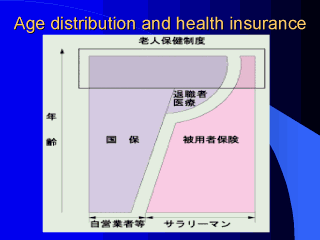| front |1 |2 |3 |4 |5 |6 |7 |8 |9 |10 |11 |12 |13 |14 |15 |16 |17 |18 |19 |20 |21 |22 |23 |24 |25 |26 |27 |28 |29 |30 |31 |32 |33 |34 |35 |36 |review |
 |
Although an elderly may
qualify as a dependent family member of the employed population if his or her annual
income is less than certain threshold (1.8 million yen), the vast majority (72%) of the
elderly population will be insured by Kokumin Kenko Hoken after retirement. Given the higher percapita health care cost for the elderly, there is a persistent, and growing, inequality of financial burden between the two systems. The ideal solution would be the unification of existing insurance systems, which the Kokumin Kenko Hoken side has been advocating for decades. But the unification proposal has been hindered by strong opposition from the Hiyosha Hoken side and the business circle which is required to contribute half of the premium for the employees. As a patch work remedy, a quasi financial redistribution mechanism was created in 1983, which was to be named Elderly Health Care System [EHCS]. The picture shows a structural relationship among Kokumin Kenko Hoken [blue], Hiyosha Hoken [pink] and EHCS [shown as an umbrella bridging the two systems]. The vertical axis indicates age showing the higher proportion of elderly in Kokumin Kenko Hoken. |